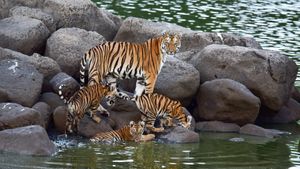Nestled in the heart of the Eastern Himalayas, Neora Valley National Park is a hidden paradise that boasts pristine natural beauty, unique biodiversity, and a range of exciting outdoor activities. This protected wildlife reserve is a nature lover's dream, offering breathtaking landscapes, cascading waterfalls, dense forests, and a diverse range of flora and fauna.
The park is home to rare and endangered species, including the elusive red panda, clouded leopard, and Himalayan black bear, making it a top destination for wildlife enthusiasts. But the park's beauty extends beyond its wildlife, as it also boasts stunning rhododendron blooms that paint the hillsides in a riot of colour during the spring season.
Whether you are an avid hiker, an adventurous trekker, or simply looking to escape the hustle and bustle of city life, Neora Valley National Park has something for everyone. Stroll through the forest and witness the lush greenery and vibrant birdlife, or trek to the park's highest peaks for breathtaking views of the Himalayas.
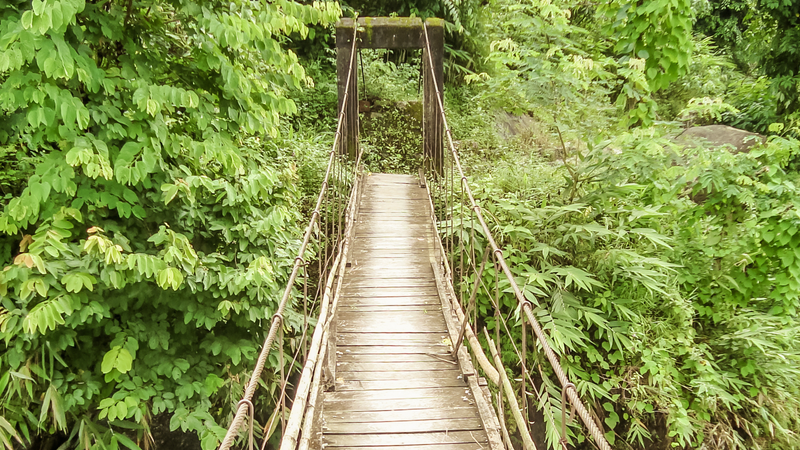
Best time to visit Neora National Park, Kalimpong
The best time to visit Kalimpong to explore the Neora Valley National Park is during the winters, from November to February when the weather is pleasant and dry. The park is also accessible during the summer months, from March to June, although the weather can be unpredictable with occasional rain showers.
The spring season, from March to April, is a popular time to visit as the park is adorned with stunning rhododendron blooms. This is an ideal time for nature lovers and photographers to capture the beauty of the park's flora and fauna.
The monsoon season, from July to September, should be avoided as the park experiences heavy rainfall, which can lead to landslides and roadblocks. Additionally, during this time, the park remains closed to visitors due to safety concerns.
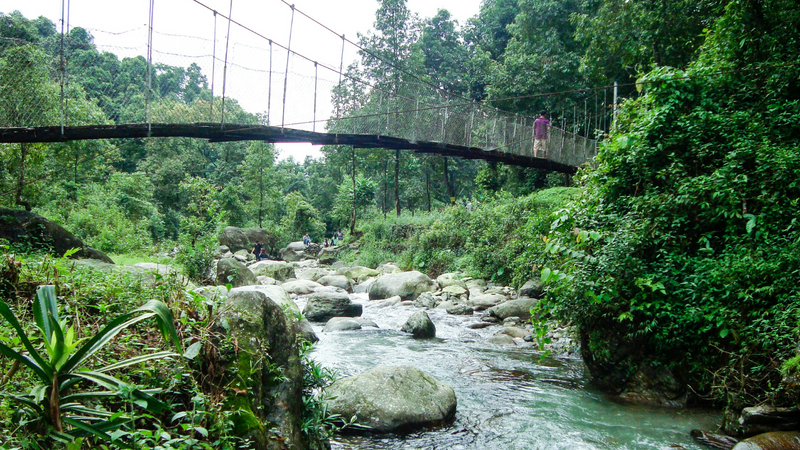
How to reach Neora National Park
Neora National Park is in the Kalimpong district of West Bengal, India. There are several ways to reach the park, depending on your location and mode of transport.
By Air: The nearest airport is Bagdogra Airport, which is about 80 km away from the park. From the airport, you can hire a taxi or take a bus to reach the park.
By Train: The nearest railway station is New Jalpaiguri Railway Station, which is well-connected to major cities in India. From the railway station, you can hire a taxi or take a bus to reach the park.
By Road: The park is well-connected by road, and there are regular buses and taxis available from Siliguri, Darjeeling, and Kalimpong. Private vehicles can also be hired for a more personalised experience.
Once you reach the park's entrance, you will need to obtain the necessary permits and pay the entrance fee before entering the park. It is advisable to plan your visit in advance and book your accommodation and transport to avoid any last-minute hassles.
7 reasons to visit Neora Valley National Park
1. A breathtaking river
Neora Valley National Park is named after the Neora River, which flows through the park's rugged terrain. The river originates from the Todey Tangta peak, located at an altitude of over 3,200 metres. The river meanders through the park's lush green forests, creating a breathtaking landscape for visitors.
The Neora River is an important source of water for flora and fauna in the park. The river's crystal clear waters are home to several species of fish, making it a popular spot for fishing enthusiasts. Visitors can also indulge in activities like river rafting and kayaking to experience the river's beauty up close.
Apart from being an important source of water, the Neora River also plays a crucial role in the park's ecosystem. The river and its surrounding forests provide a habitat for a wide variety of flora and fauna, including the endangered red panda. The river's banks are also home to several bird species, making it a great spot for birdwatching.
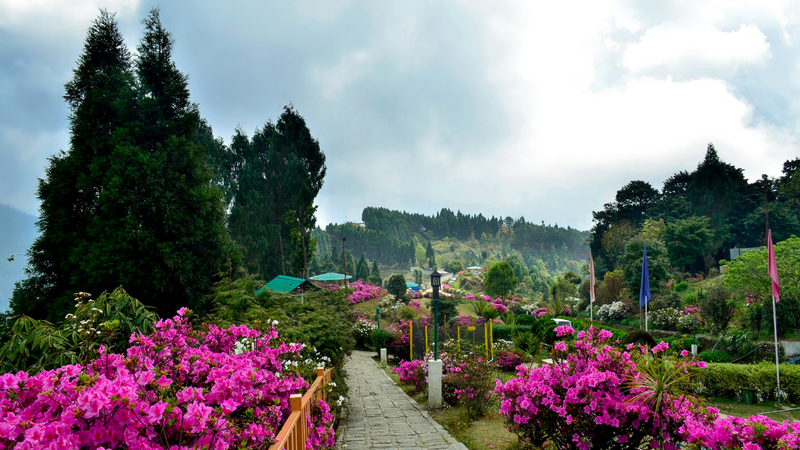
2. The rich vegetation
Neora Valley National Park is a paradise for nature lovers and one of the richest biological zones in the entire eastern Himalayas. The park is home to a diverse range of flora, including several species of trees, shrubs, herbs, and climbers. The vegetation in the park varies according to altitude, creating a unique ecosystem.
At lower altitudes, the park is covered by lush tropical forests dominated by sal, teak, and bamboo trees. As the altitude increases, the forests transition into temperate forests with oak, rhododendron, and maple trees. At higher altitudes, the forests give way to alpine meadows, where visitors can see a range of high-altitude flowers like primulas, gentians, and blue poppies.
The vegetation in the park is not only beautiful but also provides a habitat for a wide range of animals and birds. The park is home to several endangered species like the red panda, clouded leopard, and Himalayan black bear. The dense forests provide shelter for these animals and protect them from predators.
Visitors to the park can take guided tours and trek through the forest to experience the vegetation up close. The park is also home to several natural waterfalls and streams, providing a serene setting for picnics and relaxation.
3. The exotic wildlife
Neora Valley National Park is a treasure trove of wildlife and is home to several endangered and rare species of animals. The park is spread over an area of 88 square kilometres and is located in the Darjeeling district of West Bengal, India.
The park's dense forests provide an ideal habitat for a diverse range of animals, including the red panda, clouded leopard, Himalayan black bear, sambar deer, barking deer, and wild boar. Visitors to the park can also spot the rare Himalayan tahr, a type of wild goat found only in the Himalayan region. The park is also home to several species of birds, including the Himalayan monal, satyr tragopan, and blood pheasant.
The park's unique ecosystem is due to its location in the Eastern Himalayas and the varying altitude of the park, which ranges from 183 metres to 3,200 metres above sea level. This creates a diverse range of habitats, from tropical forests to alpine meadows, providing an ideal habitat for a wide range of animals.
Visitors to the park can take guided tours and treks through the forest to spot the wildlife in their natural habitat. The park also has several watchtowers and other spots from where visitors can observe the animals without disturbing them.
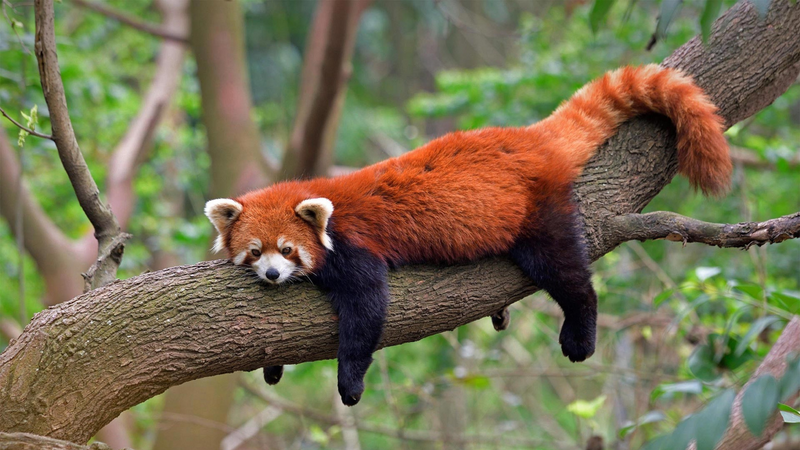
4. Home to the endangered species - the red panda
Neora Valley National Park is known for being one of the few remaining habitats of the endangered red panda. The red panda is a small, arboreal mammal that is found in the eastern Himalayas, including parts of India, Nepal, Bhutan, and China. They are known for their distinctive red and white fur, as well as their unique adaptation of having a false thumb, which helps them grip onto branches and climb trees.
The Neora Valley National Park is one of the few remaining habitats of the red panda in India, with an estimated population of around 30 individuals. The park's dense forests provide an ideal habitat for these animals, which are highly dependent on bamboo forests for their survival. The red panda is listed as an endangered species due to habitat loss, poaching, and the illegal wildlife trade.
5. Blissful birdwatching
The Neora Valley National Park is not only home to a diverse range of wildlife but also has an impressive array of bird species. The park's location in the Eastern Himalayas and varying altitudes creates an ideal habitat for several species of birds, from tropical to alpine.
Visitors to the park can spot a wide range of bird species, including the Himalayan monal, satyr tragopan, blood pheasant, kilij pheasant, Darjeeling woodpecker, rufous sibia, and Eurasian jay, among others. The park's dense forests, alpine meadows, and river valleys provide an ideal habitat for the birds, and visitors can hear their melodious songs throughout the day.
The park also has several watchtowers and hides from where visitors can observe the birds without disturbing them. The bird-watching experience at the park is truly unforgettable, with the sight of these colourful and exotic birds flitting about in their natural habitat.
Visitors can take guided bird-watching tours and treks through the forest to spot the birds in their natural habitat. The best time for bird watching at the park is between March and May and between September to December when the birds are most active and visible.

6. Majestic waterfalls
The Neora Valley National Park is blessed with several magnificent waterfalls that add to the park's natural splendour. These waterfalls are formed by the gushing streams and rivulets that flow through the park's dense forests and rocky terrain. The most famous waterfall in the park is the Rachela waterfall, located at a distance of 8 km from Lava. It is a stunning cascade of water that falls from a height of about 100 feet, surrounded by lush greenery and a peaceful ambience.
7. A thrilling jeep safari
A jeep safari is an exhilarating way to explore the diverse wildlife and scenic landscapes of Neora Valley National Park. Visitors can take a guided jeep safari through the park's rugged terrain, lush forests, and river valleys to spot various wildlife species, including the elusive red panda. The jeep safari provides an opportunity to witness the natural beauty of the park, including stunning vistas, cascading waterfalls, and diverse flora and fauna. The best time for a jeep safari is during the dry season between October and May when the roads are relatively dry and accessible.
Neora National Park is a must-visit destination that promises an unforgettable experience for all who visit. So, pack your bags and get ready to explore the natural wonders of this hidden gem in the Eastern Himalayas. If bird watching caught your eye here, don't miss the best bird sanctuaries in the country. And while you're at it, why not explore Darjeeling, which happens to be in close proximity.
Disclaimer: The details mentioned throughout this blog are sourced from publicly accessible platforms. At Zeezest, we intend to share factual and verified information. Should there be any inconsistencies or variances in the information provided, please understand that these are entirely unintentional and not meant to mislead.


_1682248222450_thumb_1200.png?w=3840&q=75)
_1681287093320_thumb_300.png)
